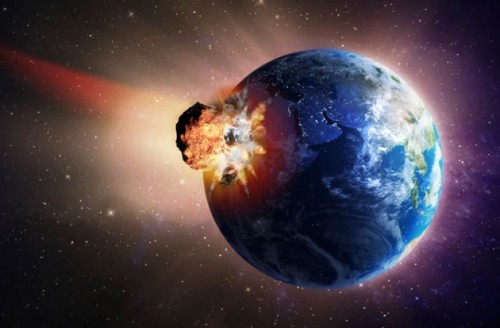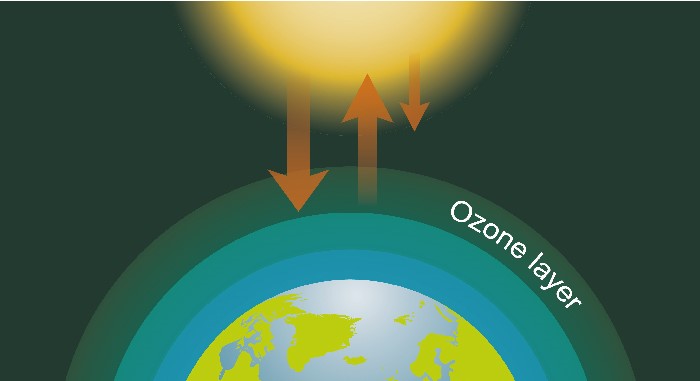"The biggest problem, basically, is there’s not a hell of a lot we can do about it at the moment," said Dr Joseph Nuth, a researcher with Nasa’s Goddard Space Flight Center.
Speaking at the annual meeting of American Geophysical Union, Nuth noted that large and potentially dangerous asteroids and comets are extremely rare, compared to the small objects that occasionally explode in Earth’s sky or strike its surface. "But on the other hand they are the extinction-level events, things like dinosaur killers, they’re 50 to 60 million years apart, essentially. You could say, of course, we’re due, but it’s a random course at that point."
Comets follow distant paths from Earth but sometimes get knocked into the neighborhood. Nuth said that the Earth had "a close encounter" in 1996, when an aberrant comet flew into Jupiter, and then again in 2014, when a comet passed "within cosmic spitting distance of Mars". That second comet was only discovered 22 months before its brush with a planet: not nearly enough time to launch a deflection mission, had it been on a course for Earth.
"If you look at the schedule for high-reliability spacecraft and launching them, it takes five years to launch a spacecraft. We had 22 months of total warning."
Nasa recently established a planetary defense office, and Nuth has recommended that the agency build an interceptor rocket to keep in storage, with periodic testing, alongside an observer spacecraft. Nuth said that Nasa could cut that five-year schedule in half, but that even reducing that schedule by a quarter would be "basically a hail-mary pass".
A rocket in storage and ready to launch within a year, however, "could mitigate the possibility of a sneaky asteroid coming in from a place that’s hard to observe, like from the sun", he said.
Nuth stressed that he and his co-authors do not speak for Nasa administrators, and that the mission would require a request to Congress and their approval.
Nasa has discovered an estimated 90% or more of near-Earth objects larger than a kilometer, the size that could cause devastation on Earth. Smaller objects are still extremely dangerous, though, and Nasa has found 874 1km-wide asteroids among 1,748 "potentially hazardous asteroids". Asteroids are darker and rockier than icy comets, and many fly within a band that stretches between Jupiter and Mars.
Dr Cathy Plesko, a scientist at Los Alamos National Laboratory, said there were two ways humans might deflect an asteroid: a nuclear warhead or a "kinetic impactor, which is basically a giant cannonball".
"Cannonball technology is actually very good technology, intercepting an object at high speed actually ends up being more effective than high explosives".
The calculations of a cannonball deflector would take far longer to refine, however, than the last-resort pyrotechnics of a nuclear bomb. To "blow it to smithereens", Plesko said, would have dangerous side-effects, including shrapnel from the blast.
"We are very carefully doing our homework before finals week," Plesko said. "We don’t want to be doing our calculations before something is coming. We need to have this work done."
Part of the scientists’ concern is a lack of knowledge. "We don’t have a lot of data about what the insides of asteroids or comets look like," she said, "but based on what we know about physics and rock and ice we can guess."
Galen Gisler, another Los Alamos scientist, said an asteroid or comet that escaped a deflection attempt would likely strike the ocean. But he said that while an asteroid smaller than 500ft in diameter would cause a spectacular splash, casting water thousands of feet into the sky, it would probably not cause a tsunami.
But a rock that explodes near a populated shoreline, above the water or when it crashes into it, would still be "highly dangerous", Gisler said, citing the damage caused by a 60ft-wide, 7,000-ton meteoroid that tore apart over the city of Chelyabinsk, Russia, in 2013. Casting a blinding fireball across the sky, the meteoroid shattered windows for miles, injured more than 1,000 people across 55 miles of the rock’s path.
For over a decade, Nasa and the National Nuclear Security Administration have worked together on studying asteroids. In October, the Federal Emergency Management Agency and Nasa performed a simulation exercise of what might happen if a huge asteroid hit near Los Angeles. If a 330-foot asteroid hit southern California, they estimated, the explosion would level cities and kill tens of thousands.
In 1908, a massive fireball, believed to be 50-100m wide, flattened hundreds of square miles of forest in Siberia, near the Podkamennaya Tunguska river. Windows were blown out more than 30 miles away, and witnesses reported burns on their skin and finding the charred remains of a herd of reindeer. Scientists calculate that the Tunguska event, as it’s called, was an explosion about 185 times stronger than the atomic bomb dropped on Hiroshima in 1945.

Humans are woefully unprepared for a surprise asteroid or comet, a Nasa scientist warned on Monday, at a presentation with nuclear scientists into how humans might deflect cosmic dangers hurtling toward Earth.




